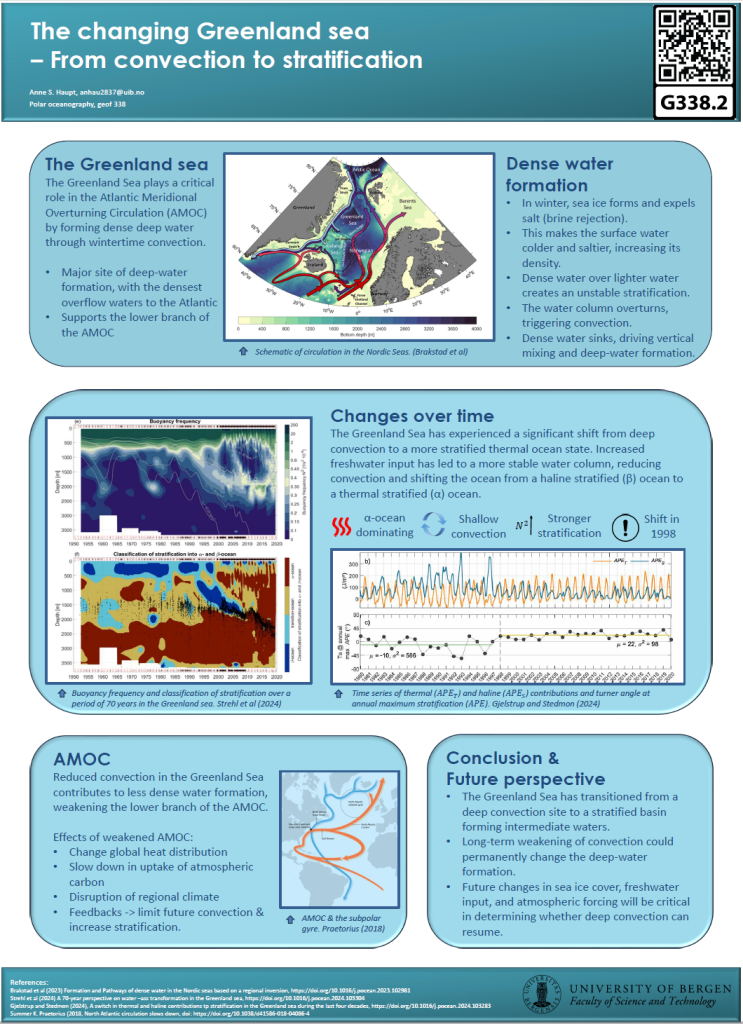Abstract
The Greenland Sea has undergone a fundamental transformation over the past several decades - from a major site of deep-water formation to a stratified basin with more shallow convection. Historically, wintertime convection in the region, driven by brine rejection during sea-ice formation, enabled dense surface waters to sink and drive vertical deep ocean mixing. This process plays a key role in supporting the lower branch of the Atlantic Meridional Overturning Circulation (AMOC).
However, recent research on the Greenland Sea reveals a marked decline in deep convection over time. Increasing freshwater input from sea-ice melt and Arctic outflow has enhanced upper-ocean stratification, reducing surface density and limiting vertical mixing. This has shifted the stratification from a haline-controlled (β-ocean) to thermally controlled (α-ocean), with a clear shift identified around 1998. Since then, only intermediate water formation has been observed, and the thermobaric mechanism for deep convection has been effectively shut down. This shift has large consequences. Reduced formation of dense water in the Greenland Sea could weaken the lower branch of the AMOC, with potential impacts on global heat distribution, carbon uptake, and regional climate. The future evolution of the Greenland Sea—and feedbacks from changes in sea ice cover, freshwater fluxes, and atmospheric forcing—will be crucial in determining whether deep convection can resume or whether stratification will intensify and further weaken the AMOC.


